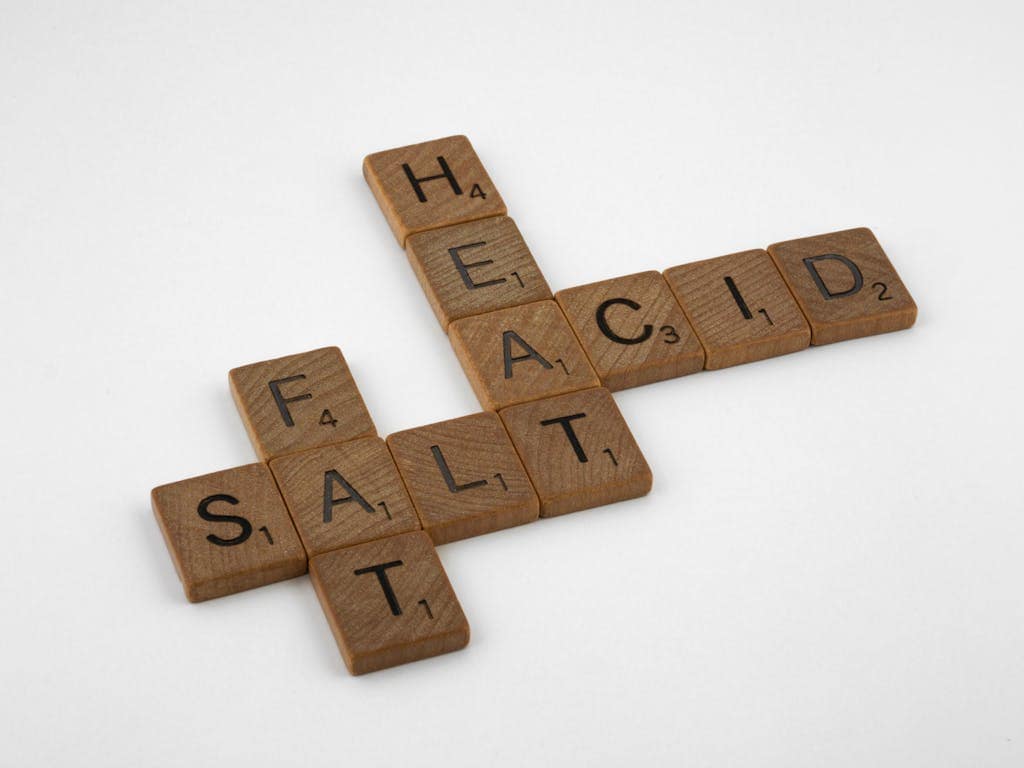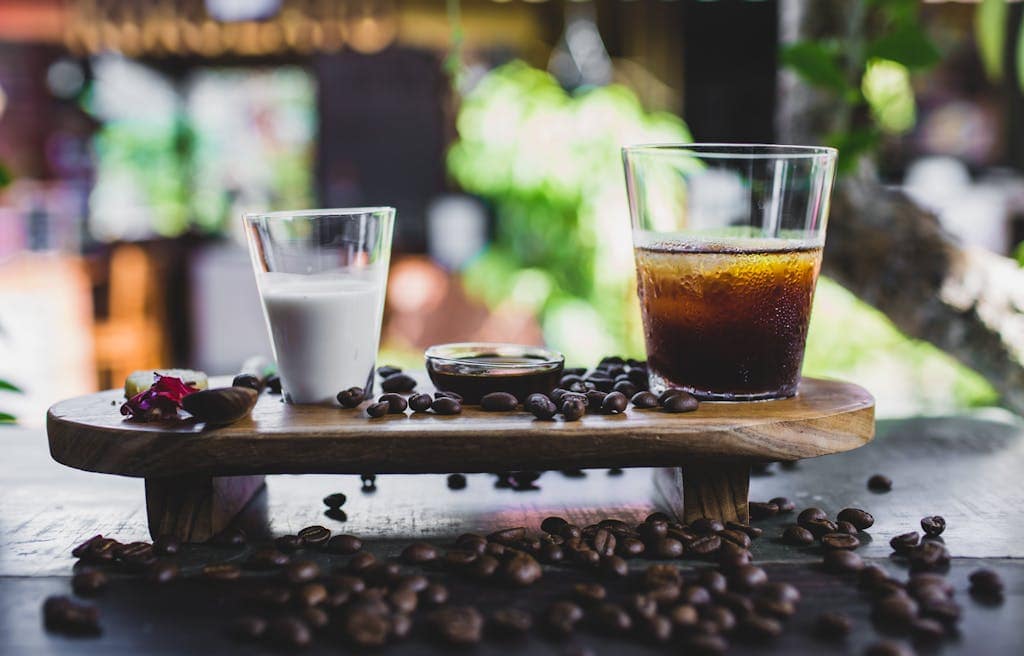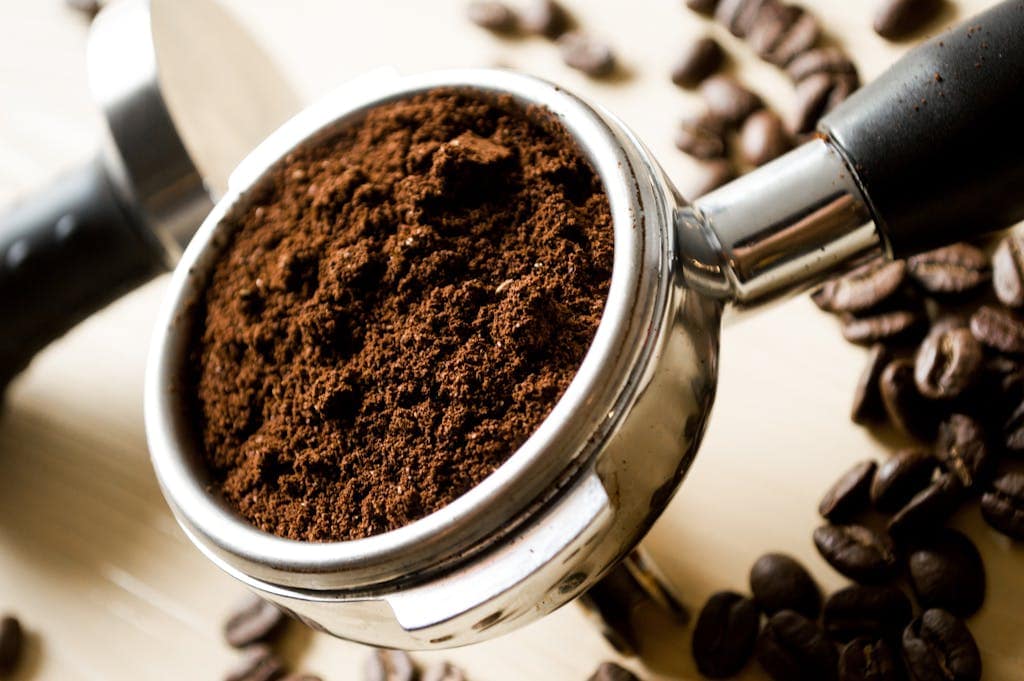Ever taken that first sip of coffee and felt a pang in your stomach? For many, the high acidity in coffee can be a true challenge. Whether it’s to avoid digestive discomfort or simply to enjoy a smoother taste, there are plenty of reasons to seek out ways to make coffee less acidic. The good news is that reducing acidity doesn’t mean sacrificing flavor. In this post, I’ll share various methods you can use at home to make your coffee less harsh on your stomach and taste buds. From adjusting your brewing technique to choosing the right beans, let’s explore some easy steps to make your next cup of joe more enjoyable. Ready to discover how to make coffee less acidic? Let’s get started.
Understanding Coffee Acidity
Acidity in coffee can be a bit confusing. It’s essential to know how acidity works to make your coffee taste better. Did you know that not all acidity in coffee is bad? Some acidity is actually good and enhances the flavor. Let’s take a closer look at what causes acidity in coffee and how it affects your daily cup.
What Causes Acidity in Coffee?
Acidity in coffee comes from various sources:
- Coffee Beans: Different types of beans have different acidity levels. Arabica beans are usually more acidic than Robusta beans.
- Growing Conditions: Soil, altitude, and climate can impact the acidity of coffee. Beans grown at higher altitudes are often more acidic.
- Processing Methods: How the beans are processed can also influence their acidity. For example, wet-processed beans tend to be more acidic compared to dry-processed ones.
- Roasting: The level of roast affects acidity. Light roasts preserve more acidity, while darker roasts reduce it.
Good vs Bad Acidity
Not all acidity is created equal. Here’s the difference between good and bad acidity:
Good Acidity:
- Adds bright and lively flavors to coffee.
- Can enhance fruity or floral notes.
- Makes the coffee more interesting and enjoyable.
Bad Acidity:
- Can taste sour or unpleasant.
- May cause stomach discomfort.
- Often results from poor quality beans or improper brewing.
Impact on Coffee Experience
Acidity plays a crucial role in how we experience coffee:
- Flavor Balance: The right amount of acidity can balance the sweetness and bitterness.
- Mouthfeel: Acidity affects the texture and feel of coffee in your mouth. It can make coffee feel light and refreshing.
- Aftertaste: High acidity can leave a lingering sharpness, while low acidity results in a smoother aftertaste.
Understanding these factors helps you make better choices when brewing coffee. Whether you love a bright cup or prefer something smoother, knowing about coffee acidity lets you customize your brew.
Knowing the basics of coffee acidity is the first step in making coffee less acidic. It’s all about finding the right balance to suit your taste and your stomach.
Choosing the Right Coffee Beans
Choosing the right coffee beans is a crucial step in reducing the acidity of your coffee. Different beans can have varying levels of acidity, so picking the right ones can make a big difference in your coffee experience. Let’s look at two key factors: opting for darker roasts and selecting low-acid coffee beans.
Opt for Darker Roasts

Photo by Tim Douglas
Darker roasts are less acidic compared to lighter roasts. But why is that? The longer roasting process breaks down chlorogenic acids, which are the compounds responsible for the sharp, tangy taste often associated with acidity in coffee.
- Taste Profile: Darker roasts have a richer, more robust flavor. They often carry hints of chocolate, nuts, and caramel.
- Stomach-Friendly: Because they are less acidic, darker roasts are gentler on the stomach. If you find that coffee irritates your digestive system, switching to a darker roast might help.
The color of the coffee beans can give you a good clue about the roast level. Dark brown to almost black beans indicate a dark roast. Look for terms like French Roast, Italian Roast, or Espresso Roast on the packaging.
Select Low-Acid Coffee Beans
Some coffee bean varieties are known for their naturally low acidity. If reducing acidity is a priority for you, consider searching out these specific beans:
- Brazilian Coffee: Brazilian beans are often lower in acidity and have a creamy, mild flavor. They are great for those who prefer a smoother cup.
- Sumatran Coffee: Beans from Sumatra are known for their earthy, full-bodied taste with minimal acidity.
- Mexican Coffee: Some Mexican coffee beans, particularly those grown at lower altitudes, are also less acidic.
How to find these beans? Check the labels at your local coffee shop or grocery store. Many brands will highlight low-acid options. You can also look for descriptions that mention “mild,” “smooth,” or “balanced.”
When you choose the right coffee beans, you take the first step towards a less acidic, more enjoyable cup of coffee. Whether it’s opting for a darker roast or selecting beans known for low acidity, these choices can make a significant difference in your daily brew. So next time you’re shopping for coffee, keep these tips in mind and enjoy a smoother, less acidic cup!
Brewing Techniques to Reduce Acidity
If acidity in your coffee is causing discomfort or you simply prefer a smoother taste, changing your brewing technique can be an effective solution. Let’s dive into three popular methods that can help lower the acidity in your coffee.
Cold Brewing
Cold brewing is a popular method to reduce coffee acidity. Cold brewing uses cold water to extract the coffee flavors over an extended period, typically 12 to 24 hours.
- Why it Works: Cold water extracts fewer acidic compounds from the coffee grounds, resulting in a smoother and less acidic brew.
- Taste Profile: This method often produces a coffee with milder flavors, which can be described as sweeter and more chocolatey.
- Steps to Make Cold Brew:
- Coarsely grind your coffee beans.
- Combine the coffee grounds with cold water in a jar or French press.
- Let it steep in the refrigerator for 12-24 hours.
- Strain the mixture to remove the coffee grounds.
- Serve over ice and enjoy!
Cold brewing can be a bit time-consuming, but the result is a refreshing, low-acid coffee that’s perfect for hot days.
Shorter Brew Time
Reducing the brew time can also lower the acidity in your coffee. When coffee grounds are exposed to hot water for too long, more acidic compounds are extracted. By shortening the brew time, you can minimize this.
- Why it Works: Less time spent brewing means fewer acidic compounds are extracted, resulting in a less acidic cup.
- Taste Profile: Expect a lighter and less bitter coffee. The flavors may be more delicate, with less pronounced acidity.
- How to Do It:
- When using a French press, reduce the steeping time by a minute or two.
- If using a drip coffee maker, you can experiment with using a finer grind and a quicker pour through.
- With espresso, try a shorter extraction time of around 20–25 seconds instead of the usual 25–30 seconds.
Experimenting with brew time can help you find the perfect balance between flavor and acidity.
Using Eggshells
It might sound strange, but adding eggshells to your coffee grounds can help neutralize acidity. This age-old trick is surprisingly effective and easy to try at home.
- Why it Works: Eggshells contain calcium carbonate, which acts as a base and neutralizes the acids in the coffee.
- Taste Profile: This method can result in a smoother and less acidic coffee, with minimal alteration to the flavor.
- Steps to Use Eggshells:
- Clean and dry an eggshell.
- Crush the eggshell into small pieces.
- Add the crushed eggshells to your coffee grounds before brewing.
- Brew your coffee as usual.
Using eggshells is a great way to reduce acidity without any fancy equipment or significant change in taste. Plus, it’s a good way to make use of kitchen waste!
By trying out these brewing techniques, you can find the one that best suits your taste and preference. Whether you prefer the smoothness of cold brew, the quick fix of a shorter brew time, or the home remedy of eggshells, there’s a method here for everyone. Happy brewing!
Modifying Your Coffee
Sometimes making a few tweaks to your coffee can make it more enjoyable. Simple changes can help reduce the acidity and make your coffee gentler on your stomach. Here are a few practical ways to modify your coffee to lessen its acidity.
Add Milk or Cream
Photo by Feyza Daştan
Adding milk or cream to your coffee is one of the easiest ways to neutralize its acidity. The calcium in milk helps to counteract the acids present in coffee. This can make your cup smoother and easier on your stomach.
- Why it Works: Milk contains calcium, which neutralizes some of the acidic compounds in coffee.
- Taste Profile: Adding milk or cream gives coffee a creamier, richer taste, and tones down the sharpness.
- How to Do It: Just add a splash of milk or a dollop of cream to your coffee. You can also steam the milk for a creamier texture, similar to a latte.
Using milk or cream is a simple addition that can make a big difference in your coffee experience.
Use Alkaline Plant-Based Milks
For those who are lactose intolerant or prefer non-dairy options, alkaline plant-based milks like almond or soy milk can be excellent choices. They help to neutralize the acidity in your coffee just like regular milk.
- Options to Consider:
- Almond Milk: Known for its slightly sweet flavor, almond milk is less acidic and can balance
the coffee’s taste.
- Soy Milk: Another great option, soy milk is alkaline and blends well with coffee, adding a creamy texture without the tang.
- Almond Milk: Known for its slightly sweet flavor, almond milk is less acidic and can balance
- Benefits:
- Digestive Comfort: These plant-based milks are easier on the stomach for those who are dairy-sensitive.
- Flavor Variety: You can choose flavored versions like vanilla or chocolate for an extra taste boost.
Next time you’re at the store, look for plant-based milk options and experiment to find your favorite.
Include Baking Soda
It might sound unusual, but a pinch of baking soda can work wonders to reduce coffee’s acidity. Baking soda is a base (alkaline) and can neutralize acidic components in your coffee.
- How it Works: Just a small amount of baking soda can balance out the pH level of your coffee, making it smoother.
- Taste Impact: When used correctly, baking soda won’t affect the flavor of your coffee noticeably. It simply makes it less acidic.
- Simple Steps:
- Brew your coffee as you normally would.
- Add a pinch (about 1/8 teaspoon) of baking soda to the coffee pot or directly to your cup.
- Stir well and enjoy!
Adding baking soda is an effective and inexpensive way to make your coffee less harsh on your stomach. Give it a try if other methods haven’t worked for you.
Experimenting with these simple modifications can help you find the perfect balance for a more enjoyable cup of coffee. Whether you prefer dairy or plant-based milks, or a quick fix with baking soda, there’s a solution for everyone looking to reduce coffee acidity. Happy sipping!
Adjusting Water Temperature
Using the right water temperature can make a big difference in how acidic your coffee tastes. Let’s dive into why brewing with cooler water can help break down fats and oils more slowly, resulting in less acidic coffee.
Brewing with Cooler Water
Brewing your coffee with cooler water might seem like a minor tweak, but it can have a significant impact on acidity. Let’s explore how this works.
When water is too hot, it extracts the coffee’s oils, acids, and caffeine more quickly. This can result in a more acidic brew. Cooler water, on the other hand, slows down this process. Here’s why that matters:
- Slower Extraction: Using cooler water means the extraction process is slower and gentler. This helps to break down the fats and oils in the coffee at a more controlled rate. As a result, fewer acidic compounds make their way into your cup.
- Smoother Taste: Cooler water often leads to a smoother, less tangy coffee. You might notice more subtle flavors and a richer, rounder profile.
- Temperature Guidelines: The ideal temperature for brewing coffee typically falls between 195-205°F (90-96°C). If you aim for the lower end of this range, say 195°F, you’ll likely get a less acidic cup.
Brewing with cooler water can be as simple as adjusting your kettle or coffee maker settings. If you’re using a manual brewing method like a French press or pour-over, just let the boiled water sit for a minute or two before using it to brew.
So next time you’re brewing a pot, think about the temperature of your water. It’s a small adjustment that can make a big difference in reducing the acidity of your coffee.
Final Tips and Tricks
If you’re still searching for ways to make your coffee less acidic, you’re in luck. Here are some final tips and tricks to help you enjoy a smoother, less acidic cup of coffee.
Use Finer or Coarser Grinds
The size of your coffee grounds can have a significant impact on the acidity of your coffee. Adjusting your grind size may help you dial in the perfect balance for a less acidic cup.
- Finer Grinds: Using finer coffee grounds can increase the surface area exposed to water during brewing. This can lead to quicker extraction and potentially more acidity. However, it can also lead to over-extraction, which might make your coffee taste bitter.
- Coarser Grinds: On the other hand, coarser grounds reduce the contact surface area and slow down the extraction process. This can help to avoid the extraction of too many acidic compounds, resulting in a smoother, less tangy coffee.
Experimenting with different grind sizes can help you find the sweet spot where your coffee tastes just right. If you’re using a manual grinder, you might need to adjust it a few times to get it perfect. If you use a burr grinder, follow the manufacturer’s guidelines for adjustments.
Experiment with Different Brewing Methods
The method you use to brew your coffee can also influence its acidity. Changing up your brewing technique may lead to a more enjoyable, less acidic cup.
- Pour Over: This method allows you to control the water temperature, brew time, and grind size, all of which can be adjusted to reduce acidity.
- AeroPress: Known for its versatility, AeroPress can produce both espresso-like coffee and a lighter brew. Adjusting the steeping time or using less pressure can help in reducing acidity.
- Moka Pot: This stovetop brewer tends to produce a stronger, richer coffee, often with less acidity compared to drip coffee.
- Siphon (Vacuum Pot): Using this method, you can control the entire brewing process. This allows for precise temperature control and extraction time, helping to minimize acidity.
By experimenting with different brewing methods, you can find the one that best suits your taste preferences and reduces the acidity to a comfortable level.
Experiment with these tips and see which works best for you. A little change in grind size or a new brewing method could be all you need for a smoother, less acidic coffee experience. Happy brewing!
Conclusion
It’s clear that making coffee less acidic can be simple and effective. Opt for darker roasts, which naturally have lower acidity. Cold brewing is a great technique to reduce acidic compounds. Shortening brew time and adding eggshells or a pinch of baking soda can also help.
Adjusting water temperature to cooler levels can prevent the extraction of too many acidic compounds. Adding milk or choosing alkaline plant-based milks like almond or soy can neutralize coffee’s acidity.
Experiment with different methods and find what works best for you. Whether it’s the beans, brewing technique, or a simple addition to your coffee, these tips will help you enjoy a smoother, less acidic cup. Happy brewing!





 the coffee’s taste.
the coffee’s taste.